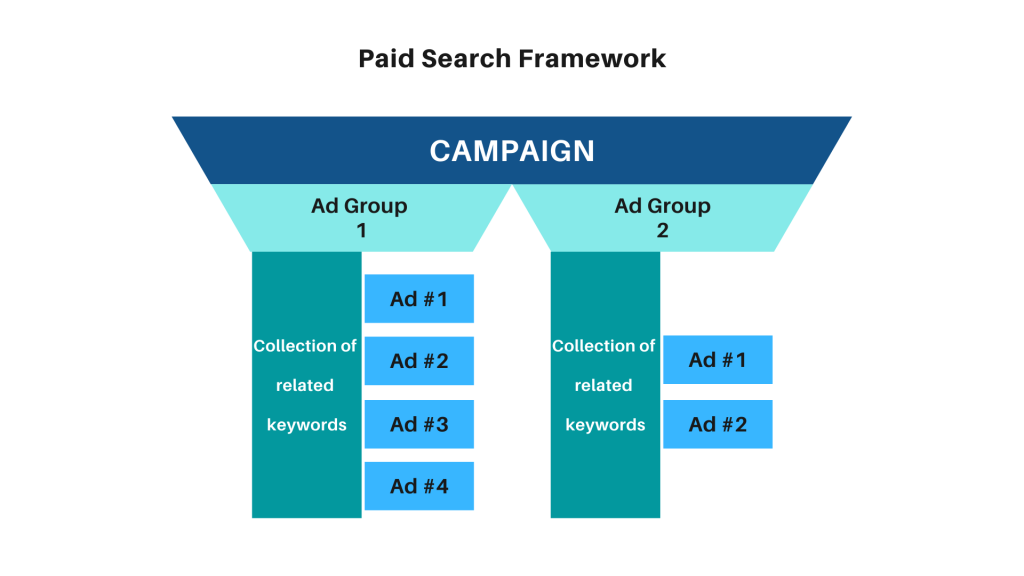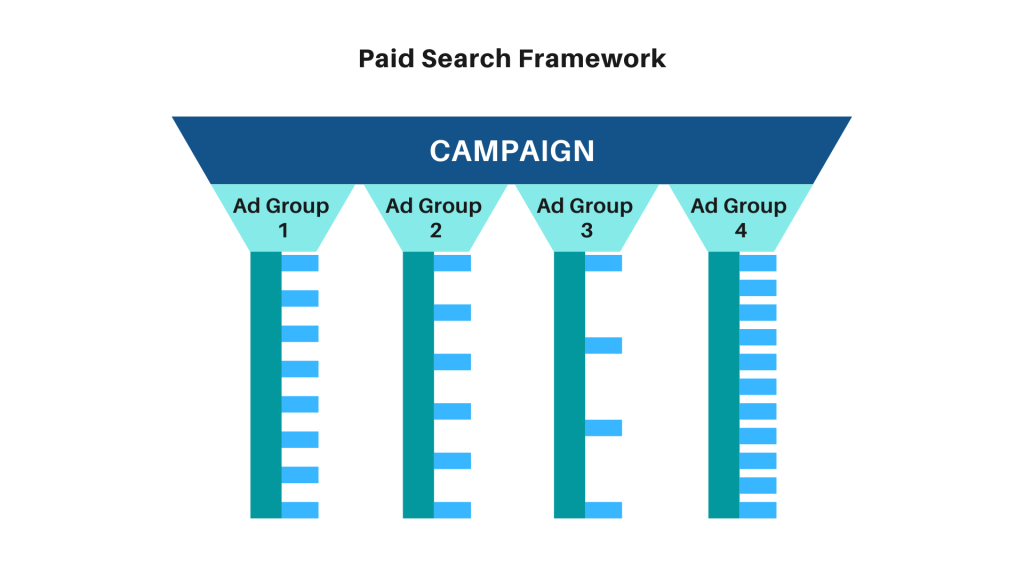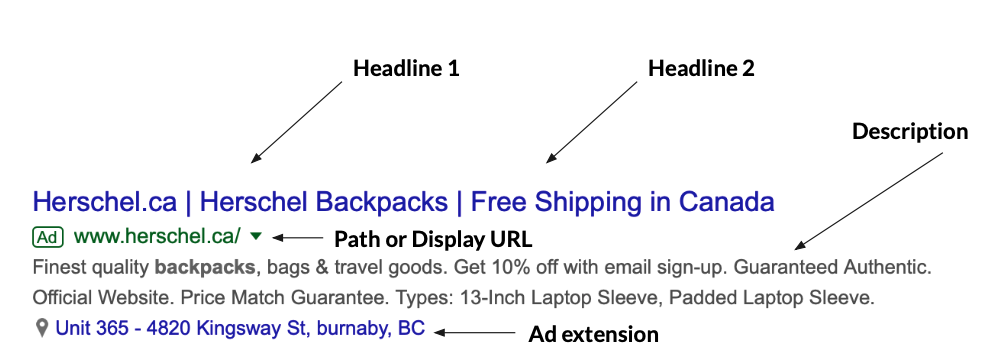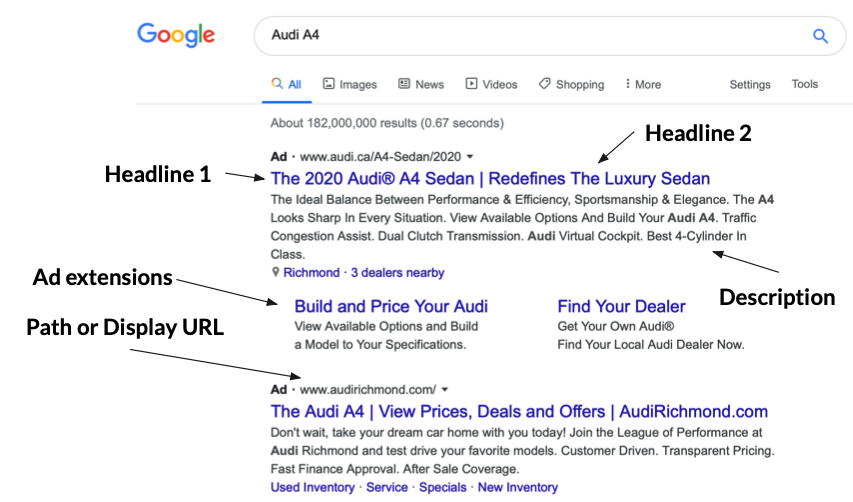20 Understanding Paid Search
Paid search is an advertising system where the advertisers pay only for each click on their advertisements. While it is most often used as an advertising system offered by search engines, such as Google, it can also be used for banner advertising (where the advertiser pays for clicks on the advertisement as opposed to impressions). Paid search is also the system on which many shopping engines and directories, such as NexTag and Shopping.com, are based. Sometimes paid advertising on search engines is referred to as “PPC” or pay-per-click advertising.
Spotting the paid ad
Paid search advertisements on search engines are easy to spot—they’re sometimes identified as “sponsored links” or “ad” beside, above, or below the listing. The small writing is important because it separates an organic listing (the result of SEO) from a paid one.

Paid search advertising is keyword based—this means that it is based on the search term that a user enters into a search engine. A search term can have one word or be made up of many words (just like in SEO). Sometimes a multiword search term is referred to as a “key phrase” or “keyword phrase.” Advertisers target those keywords for which they want their advertisement to appear.
For the advertiser, the beauty of paid search advertising on search engines is that their advertisements are displayed when potential customers are already expressing intent—they are searching for a product or service. It allows advertisers to present their offering to a potential customer who is already in the buying cycle.
Why paid search advertising?
Search engine advertising rives a lot of traffic to new websites – in fact, more than any other online advertising method. Unlike traditional advertising, in magazines, billboards, etc., paid search enables a website owner to measure the effectiveness of their advertising efforts. The data that they collect is more reliable than any other form of advertising. And you only pay for your ad when a user clicks on it (whether or not that click leads to a sale).
How it works
With paid search advertising, the advertiser does the following:
- Creates the content for an advertisement
- Selects the keywords for which that advertisement should appear
- Chooses the maximum amount they are willing to pay for a click on the advertisement (this amount can be unique to each keyword they have selected for an advertisement)
The search engine algorithm does the following:
- Checks the advertisement for compliance to editorial guidelines
- Displays the advertisement for relevant search queries
- Determines the rank, or position, of the advertisement based on the advertiser’s maximum bid and the relevance of the advertisement (which includes factors such as click-through rate [CTR], ad copy, keywords, and landing-page relevance to the search)
Making sense of Google Ads
Before jumping into paid search advertising, get to know the structure and lay of the land first. There are three important features of paid search advertising:
The paid search framework
The Google paid search advertising framework can be best explained when illustrated. At the campaign level, the budget is set: this tells Google how much money overall you can spend on clicks. Once you have maximized your budget, your ads are not shown anymore (so you don’t “lose” more money than you can afford). While the budget is determined by the marketer, the amount that gets spent is determined by taking the number of clicks and multiplying by the average cost per click (or “CPC”). This is why it’s also referred to as “PPC” (pay-per-click) advertising.
Learn the ABC’s of Google AdWords
Within the campaign, you create Ad Groups. Each Ad Groups contains two important items: a collection of keywords that you have bid on, and a collection of ad’s you have created that integrate the keywords.

Each campaign can have multiple Ad Groups; each Ad Group can have dozens of keywords; and each Ad Group can contain several different ads.

Setting up a paid search campaign
Here are some helpful steps to consider when setting up your paid search campaign. Plan in advance to make sure you get the most out of your investment.
The anatomy of a paid search ad
According to Google, the main features in a paid search ad are:
(“About text ads”, n.d.)
Ad extensions are optional and may also be included in a paid ad to encourage more targeted promotions to searchers.

What does a “good” paid ad look like? A well-crafted and relevant ad will demonstrate the following:
- Strong keyword relevance: the search terms appear in all the features in the ad.
- Clear and commanding value proposition: the ad is distinct and compelling compared to its competitors.
- Obvious call-to-action: the CTA invites action the user to “click” on the ad.
- Relevant ad extensions: the ad includes extensions that encourage more clicks.

From URL to description, a paid search ad must include search terms that match those of the landing page the ad is pointing to. Search terms should be written into the ad naturally and authentically.
5 Tips for Writing Text Ads
Text Attribution
- The content on this page except for the images, graphics, and examples, is adapted from eMarketing: The Essential Guide to Online Marketing by Rob Stokes and Saylor Academy which is licensed under a CC BY-NC-SA 4.0 International License.
References
About text ads. (n.d.). Google Ads Help. https://support.google.com/google-ads/answer/1704389?hl=en.

